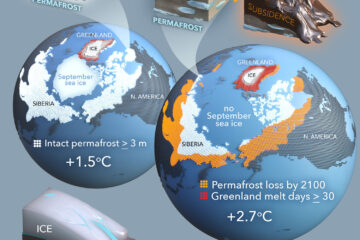Impacts of increased soil burn severity on larch forest regeneration on permafrost soils of far northeastern Siberia
Fire severity is increasing across the boreal forest biome as climate warms, and initial post-fire changes in tree demographic processes could be important determinants of long-term forest structure and carbon dynamics. To examine soil burn severity impacts on tree regeneration, we conducted experimental burns in summer 2012 that created a gradient of residual post-fire soil organic layer (SOL) depth within a mature, sparse-canopy Cajander larch (Larix cajanderi Mayr.) forest in the Eastern Siberian Arctic. Each fall from 2012 to 2016, we added larch seeds to plots along the burn severity gradient. We tracked density of new larch germinants and established seedlings (alive ≥ 1 year) during subsequent growing seasons, along with changes in seedbed conditions (permafrost thaw depth, moisture, and temperature). Over the study, a cumulative total of 17 and 18 new germinants m−2 occurred in high and moderate severity treatments, respectively, while germinants were rare in unburned and low severity treatments (< 0.5 germinants m−2). Most seedlings (> 50%) germinated in summer 2017, following a mast event in fall 2016, suggesting safe sites for germination were not fully occupied in previous years despite seed additions. By 2017, established seedling density was ∼5 times higher on moderate and high severity treatments compared to other treatments. Cumulative total density of new germinants and established seedlings increased linearly with decreasing residual SOL depth, as did thaw depth, soil moisture, and soil temperature. Our findings suggest that increased soil burn severity could improve seedbed conditions and increase larch recruitment, assuming seed sources are available. If these demographic changes persist as stands mature, a climate-driven increase in soil burn severity could shift forest structure from sparse-canopy stands, which dominate this region of the Siberian Arctic, to high density stands, with potential implications for carbon, energy, and water cycling.


